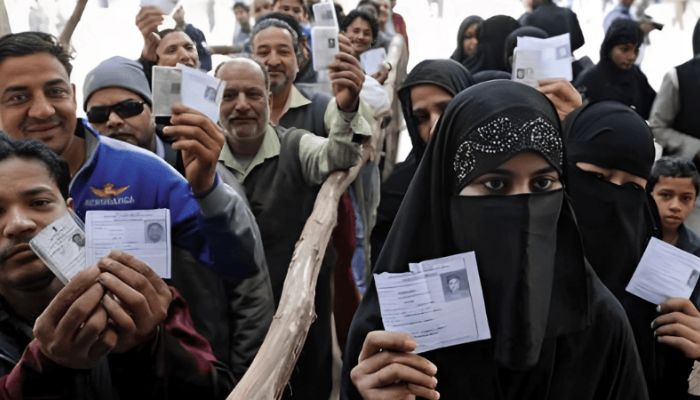Election Commission has published a fresh draft of Bihar’s electoral roll list after conducting a Special Intensive Revision (SIR) exercise. According to the updated list, around 65 lakh names have been struck off the rolls in the state. The struck-off names primarily consist of deceased persons or those who could not be located at their registered addresses.
But what’s surprising is the large-scale deletion of names in some districts, particularly in Muslim-dominated Kishanganj. Here, a record 1.45 lakh names have been removed from the list.
This amounts to an astonishing 11.8% of the district’s total voter base. It can easily tip an election in which even a 4–5% margin can make a difference.
11% voters go missing from Kishanganj roll
Kishanganj, which shares a border with West Bengal and is inhabited by almost 70% Muslims, has been in the spotlight for a long time over demographic changes and illegal immigration.
When the SIR process was initiated on 24th June, the district’s registered voter enrollment stood at 12,31,910.
However, the valid forms received during the revision numbered only 10,86,242, leaving 1,45,668 voters off the rolls. That’s more than 11% of voters vanishing from the rolls in one stroke.
Spike in applications for domicile certificates raises suspicions
Even before the SIR process formally commenced, Kishanganj witnessed a huge spike in domicile certificate applications. Such a sudden spike raised alarms about the possibility of manipulation of voter rolls.
Bihar’s Deputy Chief Minister Samrat Choudhary recently raised the issue. He indicated that between the months of January to May in the year 2025, the district had an average of 26,000 to 28,000 applications each month.
However, within the first six days of July, more than 1.28 lakh applications for domicile certificates were submitted. That’s a number several times above average.
Choudhary highlighted that although papers such as PAN, Aadhaar, and passports need to be extensively verified, domicile certificates are relatively easy to obtain.
He had previously raised national security concerns regarding the matter.
126 Aadhaar cards for every 100 persons
The issue does not end with domicile certificates. Aadhaar saturation statistics have also raised severe doubts. In areas like Kishanganj, the issuance of Aadhaar cards has exceeded the actual population.
As per government reports, Kishanganj has a population of 20,26,541, but 21,31,172 Aadhaar cards were issued, so that is 126 Aadhaar cards for every 100 people. That’s over 1 lakh Aadhaar cards extra.
Experts and officials consider that this can indicate either Aadhaar duplication on a large scale or that illegal migrants have obtained Aadhaar cards with fake documents.
Illegal infiltration from Bangladesh
The problem takes on a more critical consideration given the location of Kishanganj. It shares a porous border with West Bengal and is situated near Bangladesh. The area has a history of illegal infiltration.
There have been reports that Kishanganj was a Hindu-majority region at the time of Independence, but has undergone major demographic shifts in the decades since, primarily due to uncontrolled infiltration.
Four Bangladeshis were recently caught in various locations in Kishanganj. Reports indicate that they had infiltrated illegally and were working as domestics in local households, hoping to settle here for good. It’s also said that many such infiltrators adopt new names and procure false documents such as ration cards, Aadhaar, and voter IDs to merge with the locals.
They even stated that individuals belonging to Nepal, Bangladesh, and Myanmar were discovered living in Kishanganj at the time of the SIR process. Most of them allegedly succeeded in obtaining Indian identification papers despite being foreigners.












